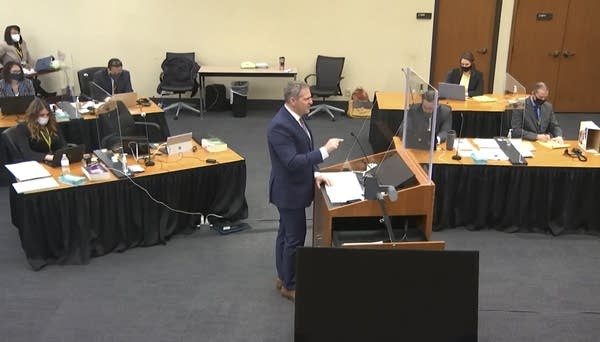Televised Chauvin trial due to pandemic yields wide access — and concern

In this screen grab from video, prosecutor Steve Schleicher speaks as Hennepin County Judge Peter Cahill presides over jury selection on March 19 in the trial of former Minneapolis police officer Derek Chauvin at the Hennepin County Courthouse in Minneapolis. Cameras in the courtroom and social distancing measures are in place because of the coronavirus.
Screenshot of Court TV
Go Deeper.
Create an account or log in to save stories.
Like this?
Thanks for liking this story! We have added it to a list of your favorite stories.


